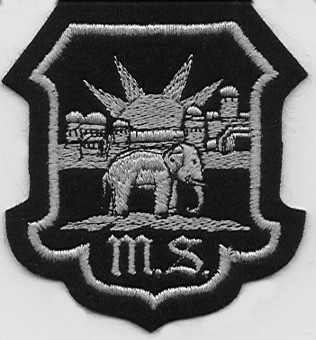History - Headmasters from 1910
Milton School started life
on the 25th July 1910, named after Sir William Milton, however the
buildings situated on Borrow Street Bulawayo, are now home to
Milton
Junior School. Milton and
Eveline first state-maintained high
schools in Rhodesia. Milton and Eveline were officially opened on the
same day by Sir William Milton, his wife Lady Eveline, Sir Charles
Coghlan and the Mayor and Town Council.
The first five headmasters of Milton were:
E.D. DE BEER (1910-1924)
'Dab', as he was known to all, was the founder headmaster and the
longest serving of all Milton's twelve headmasters. Throughout that time
he also ran the hostel and coached gymnastics which was compulsory for
all but intolerably uncoordinated. He left Milton to go to Salisbury as
Chief Inspector of Schools and two years later left Rhodesia to take up
the position of Headmaster of St. George's, Cape Town, in which city he
died in March 1 948.
COLONEL J.B. BRADY (1925-1930)
'Bimbo' Brady certainly had the most varied career of all Milton's
headmasters: he came to Africa as a soldier and served throughout the
Boer War, remaining in the country to become Headmaster of Grey College,
Bloemfontein at the remarkably early age of 27. Two years later he
became an Inspector of Schools in the Orange Free State and came to
Rhodesia in 1909 as a result of General Hertzog's pro Afrikaner
policies. He became Inspector of Schools in Rhodesia and, on the advent
of war, joined the forces in France. Four years later he was in command
of the Fourth Battalion of the King's Royal Rifles, had been wounded
twice, mentioned in dispatches four times and received both the D.S.O.
and Croix de Guerre. He returned to Rhodesia in 1920 as Senior Inspector
of Schools and succeeded Mr. de Beer in 1925. After his retirement from
Milton he became Member of Parliament for Bulawayo North and in 1939 was
back in the army as liaison officer with the Rhodesian forces in West
Africa, subsequently Egypt. He was invalided out of the army in 1942 but
his services were recognised with the award of the O.B.E. He died on 13
February 1952 at the age of 76 and, at his semi-military funeral, the
Headmaster and Head Boy of Milton were two of the pall-bearers.
(Obituary)
H.G. LIVINGSTON (1930-1941)
Col. Brady's successor, H.G. Livingston, was another soldier - he had
ended the First World War with the rank of Major and the Military Cross.
He was also one of the country's most distinguished scholars and was
described as its leading classicist. He came to Milton from Umtali Boys'
High, where he had been Headmaster, and stayed for eleven and a half
years. The most visible sign of his tenure is the vast number of trees
he planted and it was also his decision in 1937 to divide "the school
into four houses for games, the object being to put day boys and
boarders side by side in the same houses so that the former may take a
more active part in the life of the school". He left in 1941 to become
Headmaster of Prince Edward since, in those days, it was common policy
to appoint comparatively young men as headmasters and transfer them in
due course.
L.R. MORGAN (1941-1942)
Mr. Morgan was another experienced headmaster- he had been at Chaplin
for 14 years when he was transferred to Milton. He was a Rhodes Scholar
and great things were expected of his tenure at Milton but he was
destined to be the shortest-serving of the school's headmasters: after a
mere four terms he was appointed Assistant Education Officer in
Salisbury and went on to become a distinguished Secretary for Education.
W. GEBBIE (1943-1946)
Mr. Gebbie was perhaps the most experienced of all Milton headmasters
for he had been in charge of no fewer than four schools before coming to
Milton! He had taught at the school back in the twenties and had then
become headmaster successively of four junior schools - Gatooma, Sinoia,
Prince Edward Junior and David Livingstone. After only three years at
Milton he was again transferred, this time to Allan Wilson in Salibsury.
